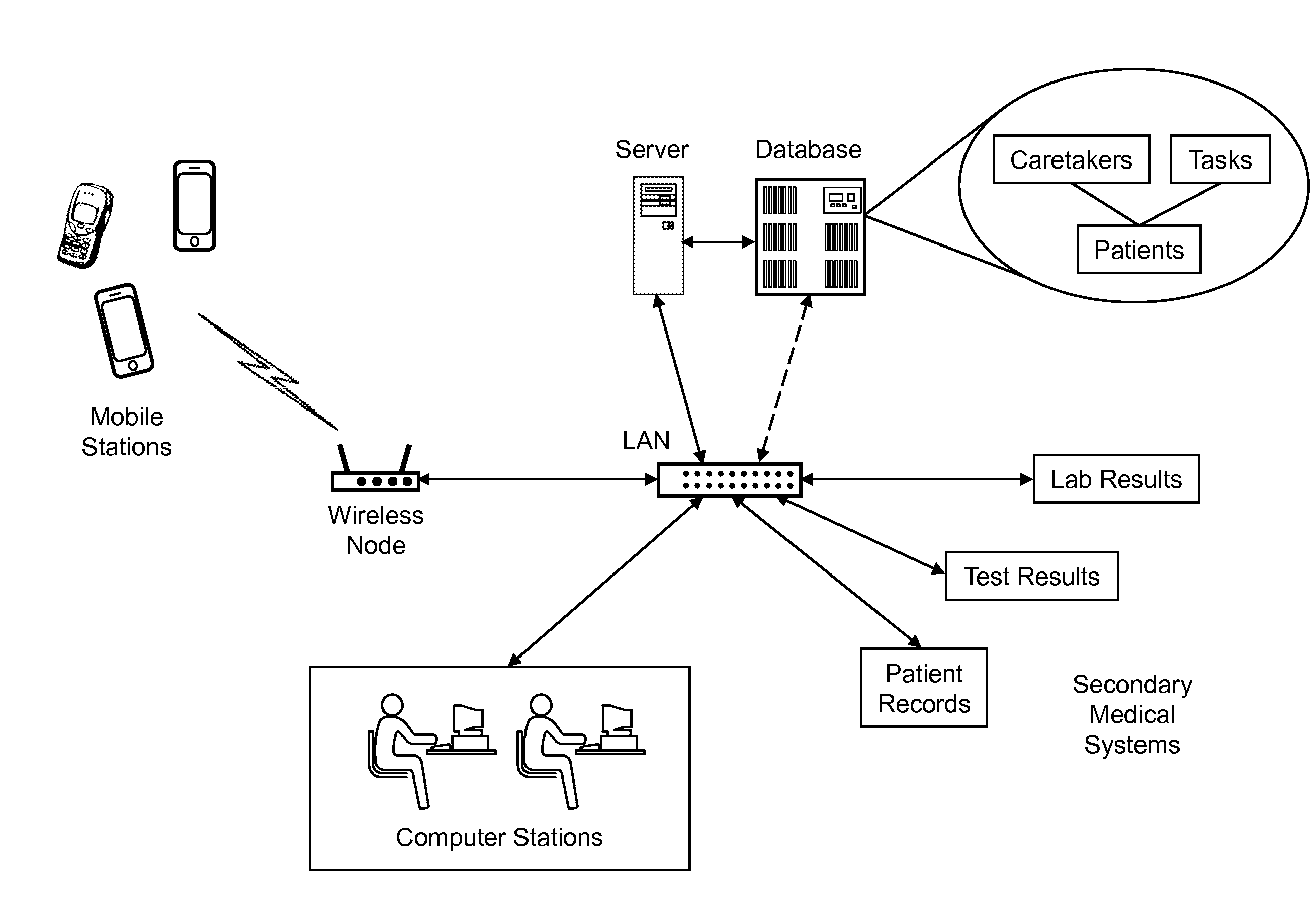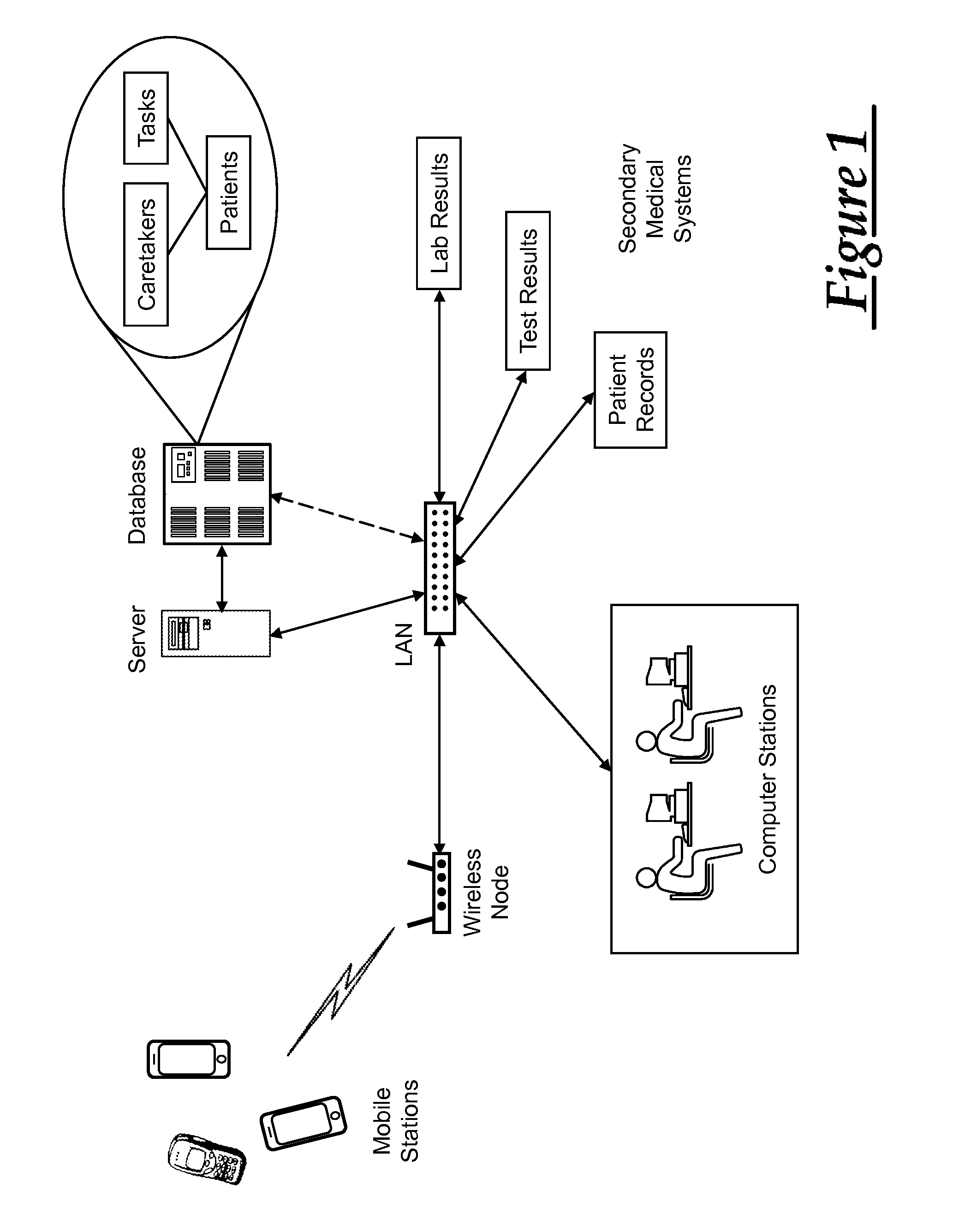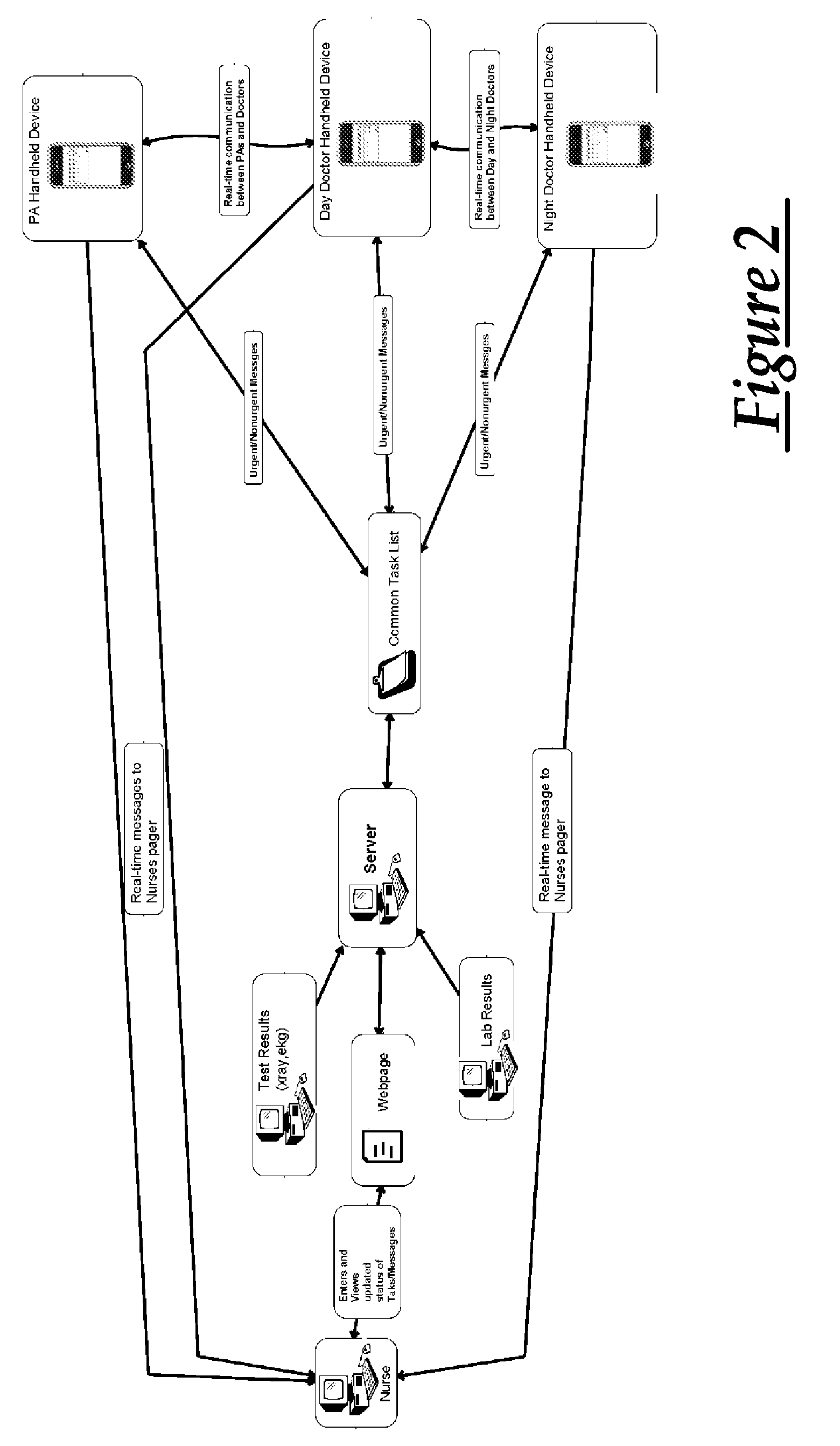Medical communication system for health care practitioners
a communication system and health care technology, applied in the field of computer-based systems for communicating patient medical information, can solve the problems of affecting the delivery of care to patients, and clinicians performing non-urgent tasks during clinical hours that lose significant time,
- Summary
- Abstract
- Description
- Claims
- Application Information
AI Technical Summary
Benefits of technology
Problems solved by technology
Method used
Image
Examples
Embodiment Construction
[0020]Referring to FIG. 1, there is shown a block diagram of the basic components of a medical communication system for use in connection with providing medical care to patients at a health care facility such as a hospital or clinic. These facilities commonly contain existing computer-based systems to record, distribute, and store patient medical information. Some of these secondary medical systems are shown in FIG. 1. They include a lab results system, a test results system and a patient records system, all of which can be accessed via computers throughout the facility. Each of these secondary medical systems are usually a separate hardware / software combination that are interlinked together via a local area network (LAN) in the facility, or may be combined either partially or fully into one or more integrated systems.
[0021]In general, the lab results system represents computer-based storage and reporting of laboratory results for parameters such as blood or body fluid analysis. The...
PUM
 Login to View More
Login to View More Abstract
Description
Claims
Application Information
 Login to View More
Login to View More - R&D
- Intellectual Property
- Life Sciences
- Materials
- Tech Scout
- Unparalleled Data Quality
- Higher Quality Content
- 60% Fewer Hallucinations
Browse by: Latest US Patents, China's latest patents, Technical Efficacy Thesaurus, Application Domain, Technology Topic, Popular Technical Reports.
© 2025 PatSnap. All rights reserved.Legal|Privacy policy|Modern Slavery Act Transparency Statement|Sitemap|About US| Contact US: help@patsnap.com



